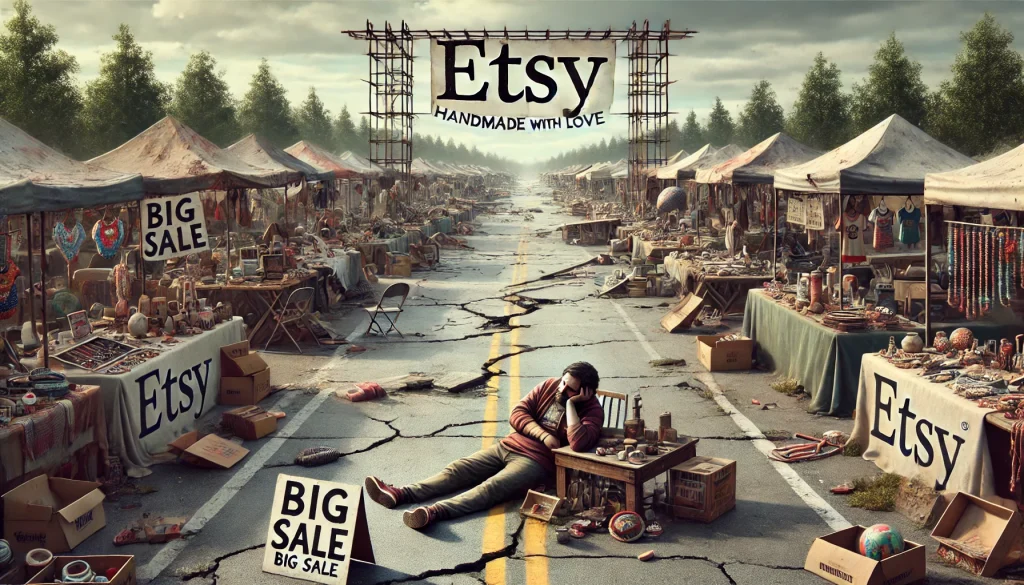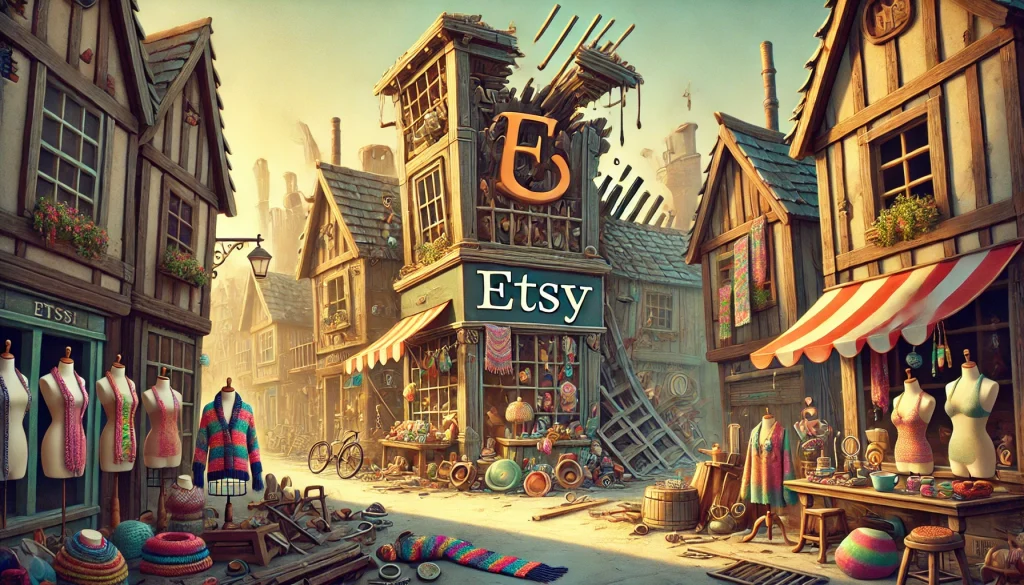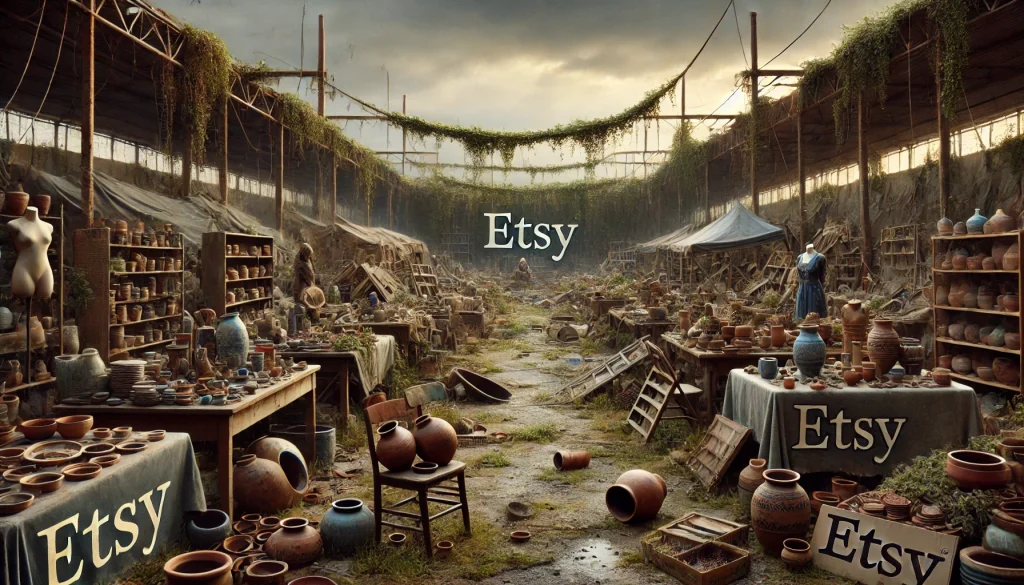Etsy, the magical land where creative souls gather to sell their lovingly crafted treasures, is often seen as a paradise for artisans. At least, that’s how it looks from the outside. But for many sellers, Etsy has become the digital equivalent of a haunted marketplace, where hope and hard work quietly fade away.
It starts with excitement—the thrill of opening an online shop, showcasing handmade creations, and imagining orders rolling in from customers who “truly appreciate handmade.” But then reality hits.
The platform, which promises to connect creators with people who value handmade items, often leaves sellers feeling like they’re shouting into a void. “I’ve spent countless hours perfecting my designs, taking photos, writing descriptions, only to sell one item after six months,” one disheartened seller says. “It’s like my work is invisible unless I pay for ads—and even then, crickets.”

“You call that a profit?” Oh, the infamous pricing dilemma. On Etsy, setting a price that reflects the time, materials, and passion behind each item can make you feel like you’re committing a crime. “Everyone expects handmade goods to be dirt cheap,” an Etsy veteran notes. “If I charged what my products are worth, I’d never make a sale.”
In response, many sellers slash their prices just to stay competitive. But when you’re selling a handcrafted item for $20, and Etsy takes a cut, you start wondering if it’s worth it at all. “I calculated it once,” one seller confesses, “I’m making about 50 cents per hour after fees, shipping, and materials. At that point, why bother?”

Custom orders from the depths of Etsy hell Then there are the custom orders. At first, they seem like the perfect way to create something unique and special for a customer. But it doesn’t take long before the nightmare begins. “I had a customer ask for a personalized mug,” one seller recalls. “By the time we were done with revisions, I’d spent over 12 hours messaging back and forth for a $15 item.”
Customers, who seem nice enough at first, can quickly turn into relentless perfectionists. “Can you make it brighter?” “Can you change the font to Comic Sans?” “Actually, can you make it look less handmade?” And just when you think you’re done, they ask for a refund because it’s not “exactly what they imagined.”
The digital dungeon of Etsy ads To make matters worse, Etsy tempts sellers with promises of increased visibility—if they’re willing to pay. Ads, promotions, featured listings… all of it sounds like the key to getting more eyes on your shop. But, as many sellers quickly find out, the investment doesn’t always pay off.
“I spent $50 on ads last month and made one sale,” one frustrated seller admits. “I feel like I’m throwing money into a void, hoping for a miracle.” Etsy’s algorithms can make even the most beautifully curated shop disappear into the shadows if you don’t play by their rules.

Etsy, the crumbling kingdom For some, selling on Etsy feels like they’re trapped in a never-ending maze of false hopes, endless fees, and invisible competition. “I thought Etsy was going to be my big break,” a seller says. “Now, I feel like I’m stuck in a system that doesn’t care if I succeed or fail, as long as they get their cut.”
The Etsy of today, with its ever-increasing fees, constant algorithm changes, and overwhelming competition, has left many creators disillusioned. “It used to feel like a community,” one long-time seller laments. “Now it’s just a factory for cheap knockoffs, with sellers fighting each other for scraps.”

So, to all the aspiring Etsy sellers out there, remember this: Etsy may offer you a glittery path to handmade success, but beware, that path might just lead you straight to a broken dream.

